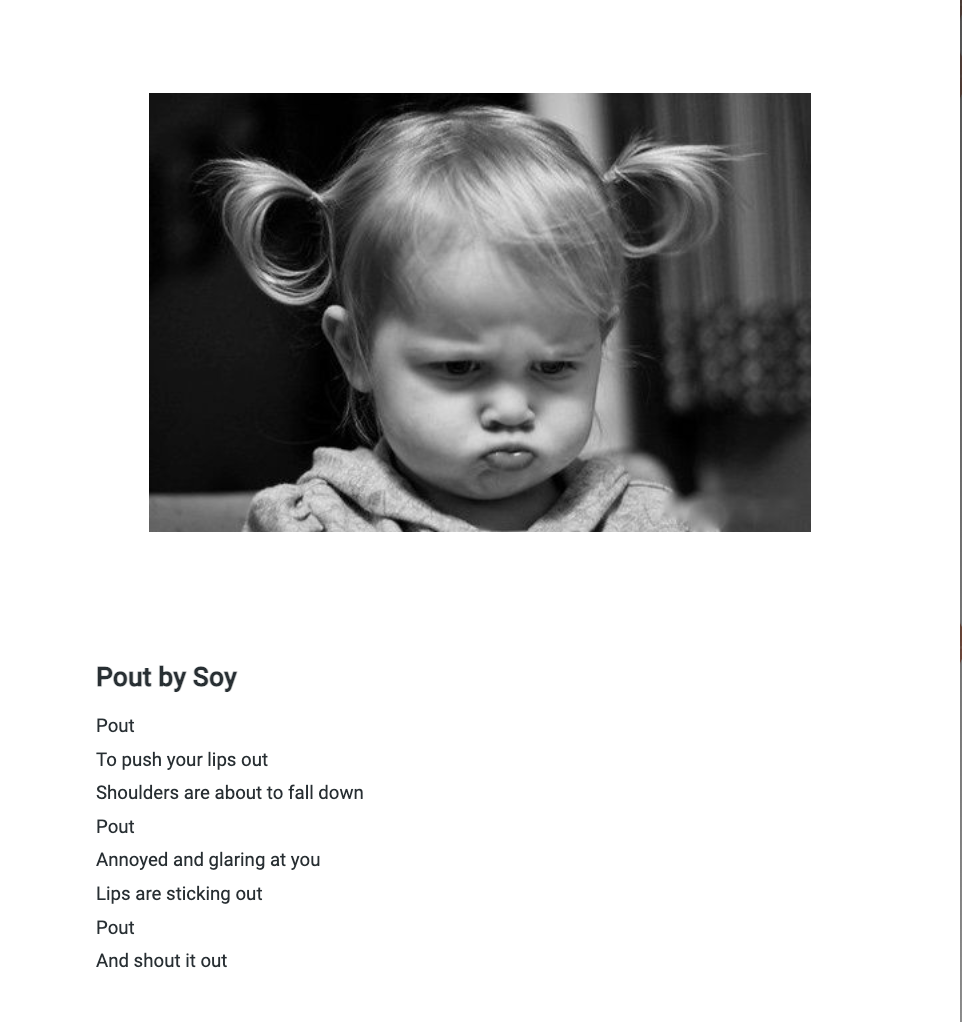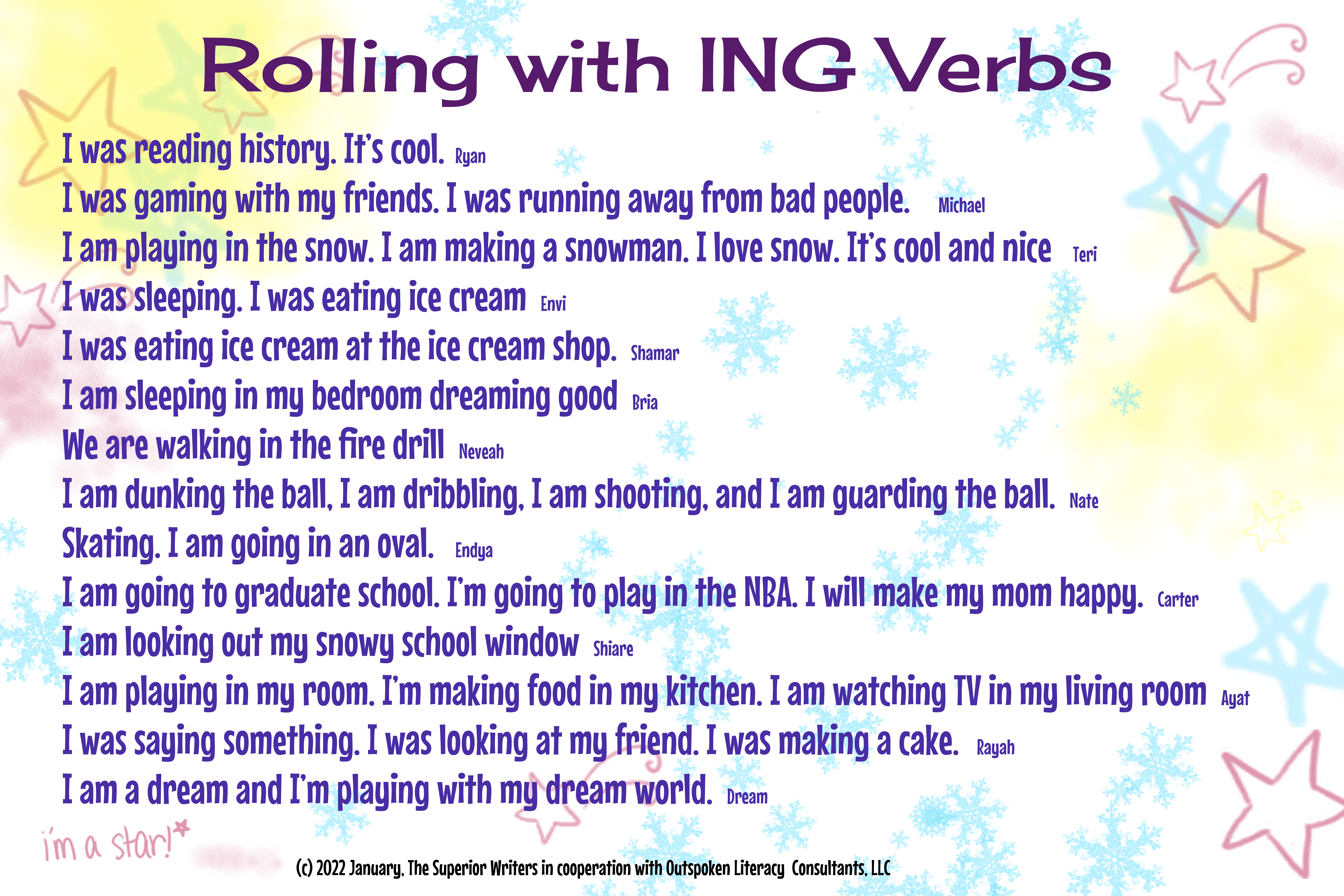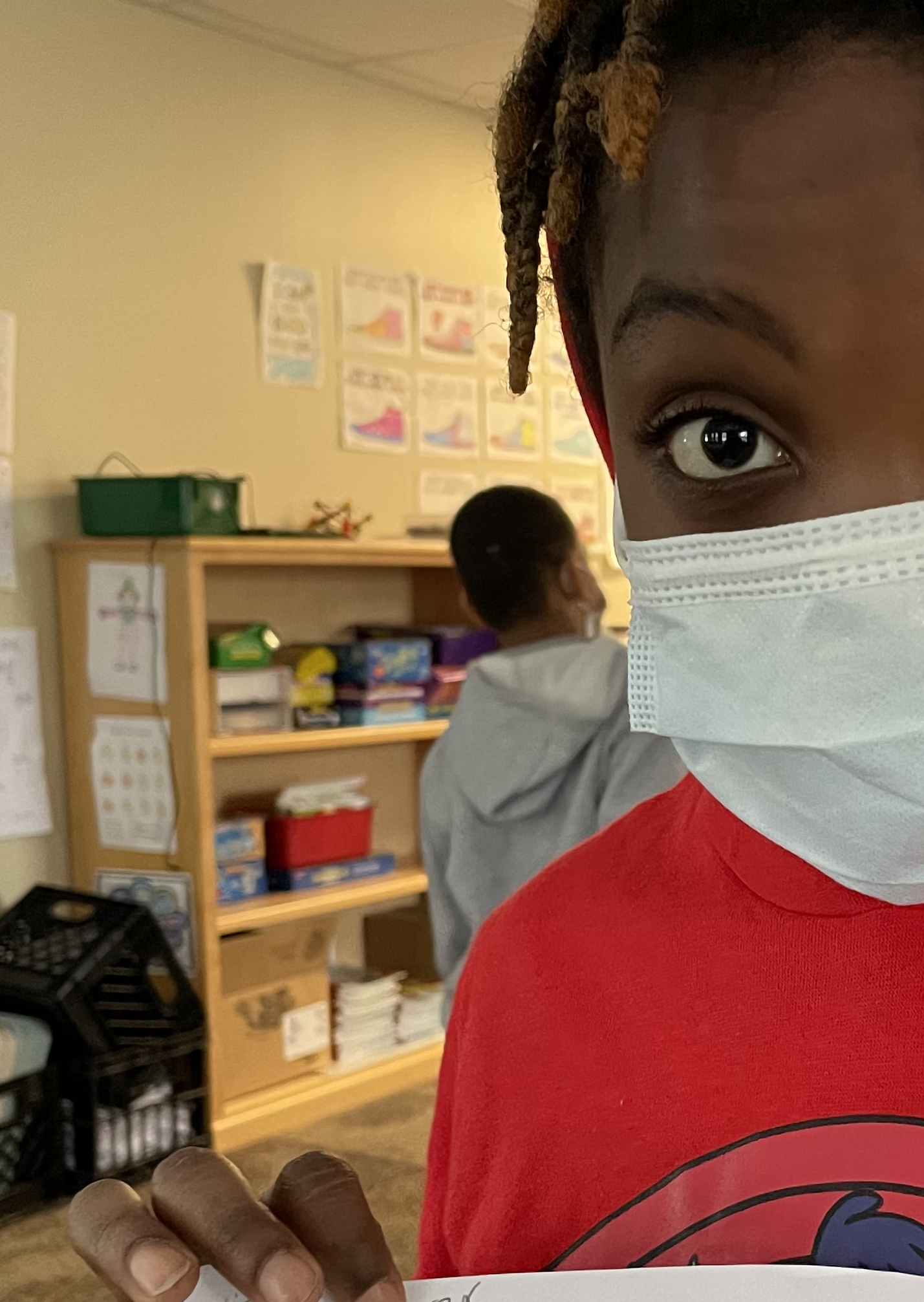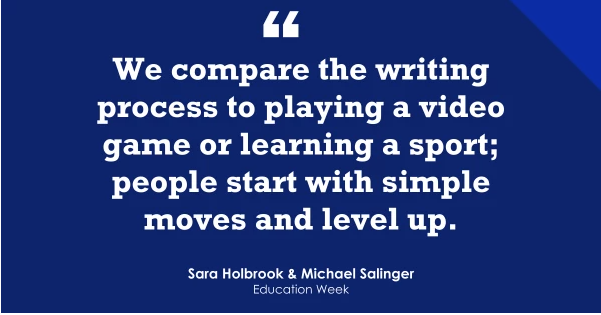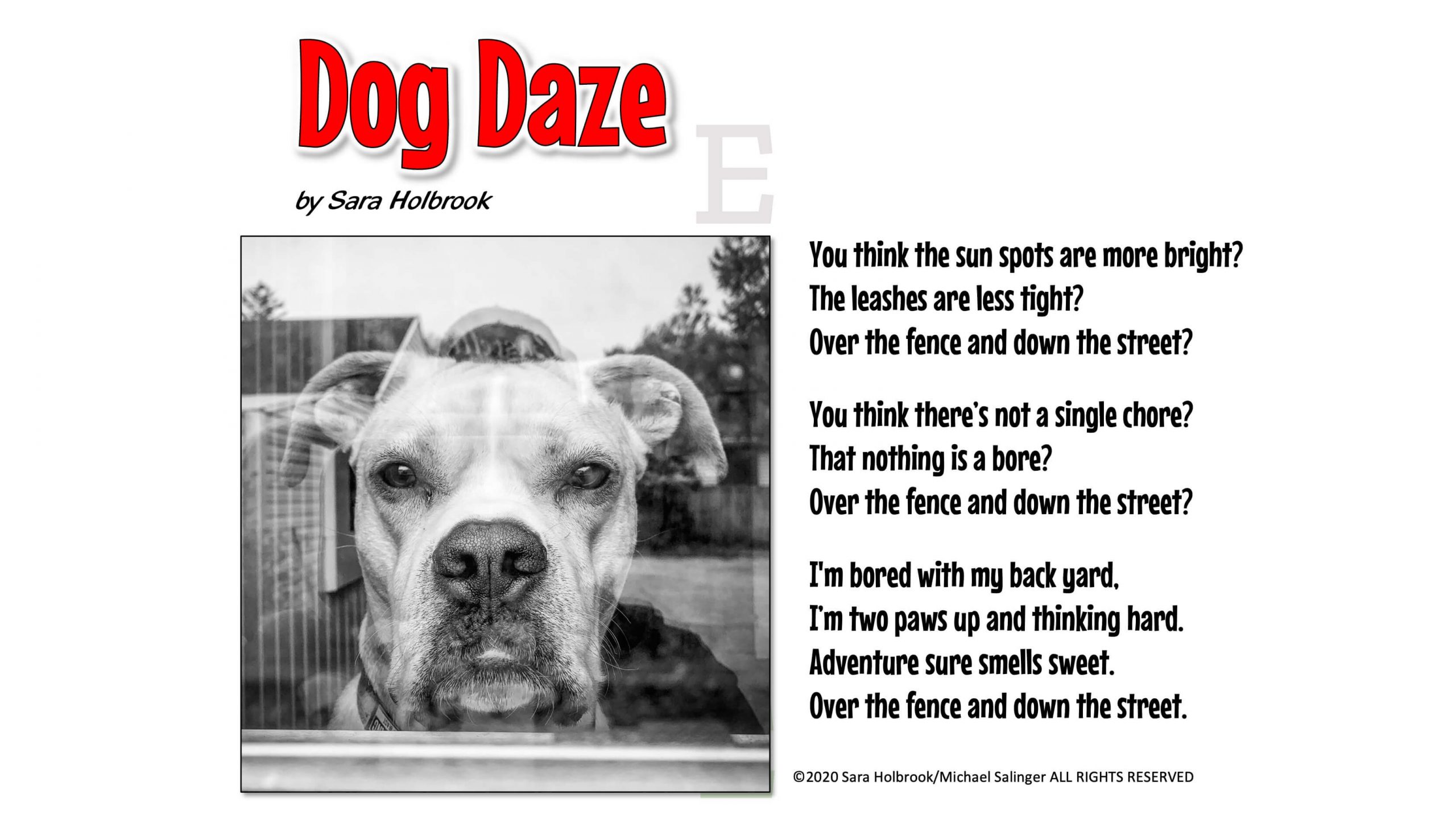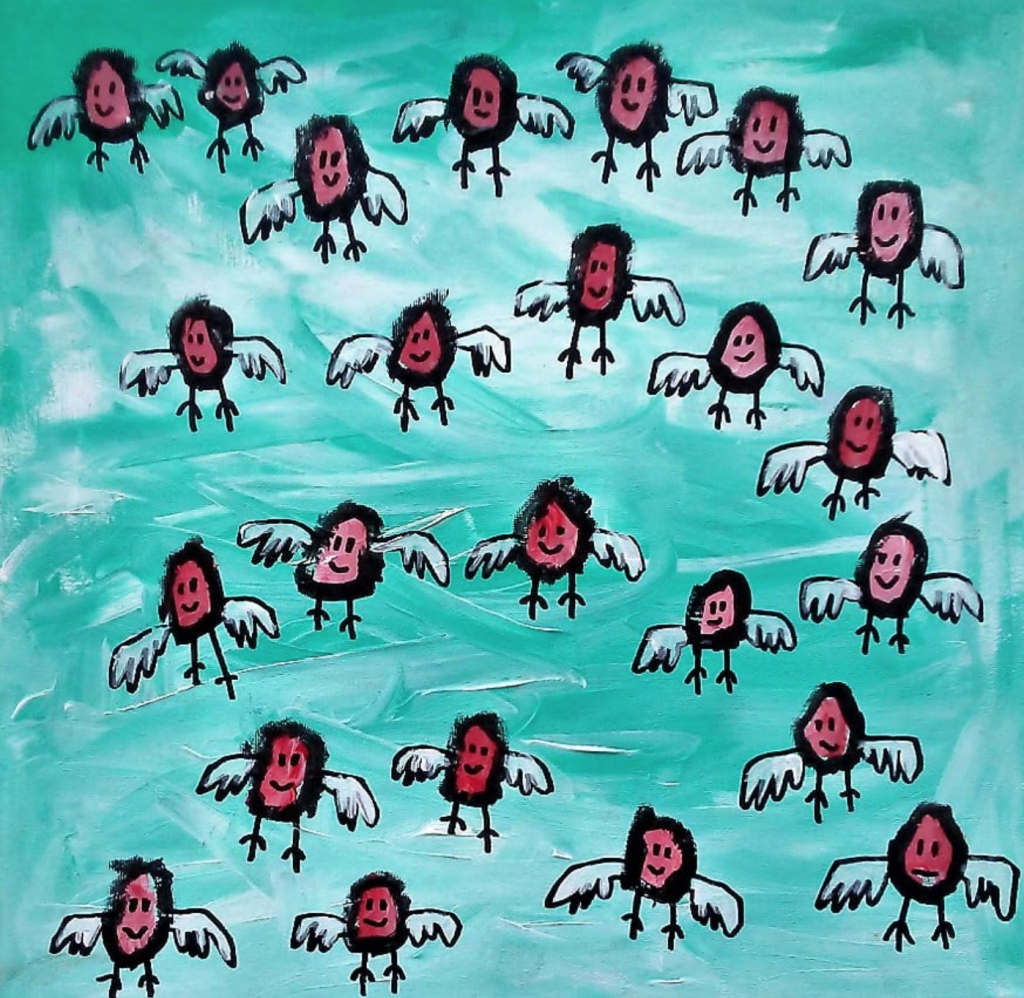
Know this: Perhaps more than any other time in education, kids are hungry for connections. They are missing time with friends and all the experiences that come from personal contact. We want to welcome them into a community where they can smile, interact, and offer ideas – and be confident that someone is listening.
Ice Breakers:
A poem is a great ice breaker. After reading the poem on Slide 1 of any given RWS lesson, ask students to turn their mics on and join you in reading together. Listen to the author read the poem. Put up a shared google doc or Padlet so that students can offer simple reactions – love it, I can relate to that, made me laugh, kind of sad, don’t get it. Respond to the comments so that students know they are being heard, “I see Clarissa can relate to the poem, you want to turn on your mic and tell us what the poem reminded you of?” “Enrique, I see you don’t get it. Are there words you want me to explain?”
Creating Classroom Rules and Expectations:
RWS lessons should follow the same remote guidelines as determined by your school or district (no turning up for class in a snorkel or from under the covers). Beyond that, there are two writing assignments every week that students will be responsible for completing. The first is a SEL journal entry and the second is a formative assessment on the student’s use of the targeted literary element. Beyond that, students are responsible for sharing the poem with a family member (see Family Share Sheet) and for submitting a recording at the end of the week and completing any assignments you might make around the vocabulary instruction (see individual lesson plans for ideas). You will want to set up in advance how students are to submit their assignments. More ideas on setting up a journal using Google Slides here.
Creating Class Traditions:
Expect students to arrive this fall anxious, angry, and dis-regulated. They don’t want life to be like this, and boy-howdy, neither do we. But here we are.
Establishing a routine that students understand and can anticipate helps reduce anxiety. The RWS routine offers student choice within a framework, empowering kids with a sense of confidence and security.
Let students know that you are offering the lessons in small bites so that the new learning is digestible. The quickest route to students tuning out is cognitive overload. This doesn’t mean we are dumbing down; it means that we are establishing a firm understanding before carefully scaffolding up.
Collaborative Projects:
You will find multiple opportunities for collaboration throughout the week.
- Vocabulary: try pairing students in breakout rooms to find or create images that explain unfamiliar words. Or they might create a short video to illustrate how a word moves. Bring the students back together to share and find reinforcement from peers.
- Ask students to turn on mics to read their journal entries aloud all at the same time, offering anonymity and an opportunity to use their voices simultaneously. Students might like to share with a partner in a breakout room. Post a google doc and ask students to share one sentence or phrase out of their journal entry. Discuss.
- Ask students to pair to complete the Quick Write to evidence their understanding of the targeted literary element. Encourage discussion. Bring the students back together to do some sharing (you may want to establish a rotation if the class size is large). Use every share as an opportunity to reinforce the learning.
- Finally, use a shared forum for students to share their recordings at the end of the week. Encourage creativity, students may want to put up an image and do a voice over or combine forces to make a recording for multiple voices. Have fun!
Forging Individual Connections:
Students can use paired writing, paired or group performance, joint read-alouds to connect with classmates. Build in time for sharing and have fun with learning.
Many thanks to “Edutopia” and Susan Yergler for sharing this helpful framework for establishing a community in the virtual classroom! We are all in this together!
Yergler, S. (2020, August 17). How to Create Community in a Virtual Classroom. Retrieved from https://www.edutopia.org/article/how-create-community-virtual-classroom

